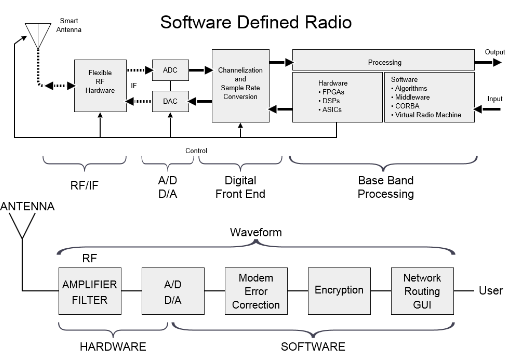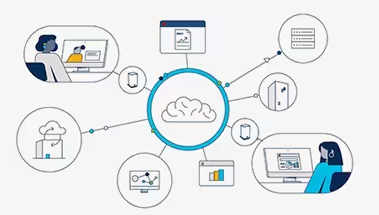SD Radio: Unleashing the Potential of Software-Defined Radio Technology
Introduction
In the world of wireless communication, technology is constantly evolving to meet the growing demand for faster, more efficient, and versatile solutions. Software-Defined Radio (SDR) is a groundbreaking technology that has revolutionized the way radio systems are designed and operated. By leveraging software-based processing and flexible hardware platforms, it offers unprecedented flexibility, scalability, and adaptability. In this blog post, we will explore the concept of SD Radio, its key features and benefits, and its transformative impact on the field of wireless communication.

- Understanding SD Radio
SD Radio, also known as Software-Defined Radio, refers to a wireless communication system in which the functionality of traditional hardware-based radios is implemented in software. Unlike conventional radios that rely on dedicated hardware components for specific frequency bands and modulation schemes, it uses programmable digital signal processing (DSP) technology to handle various wireless protocols and frequencies. This software-centric approach enables significant flexibility and reconfigurability, allowing a single radio platform to support multiple standards, frequencies, and applications. - Key Features of SD Radio
a) Flexibility and Programmability: This platforms can be reprogrammed and reconfigured through software updates, enabling support for different wireless standards and protocols. This flexibility eliminates the need for hardware modifications or replacements, making it easier to adapt to changing requirements and emerging technologies.
b) Wide Frequency Range: SD Radio systems can operate across a wide range of frequencies, from low-frequency bands used for long-range communications to high-frequency bands suitable for short-range wireless connections. This versatility makes ideal for applications ranging from amateur radio and public safety communications to military and satellite communication systems.
c) Enhanced Spectrum Efficiency: SD Radio technology allows for more efficient use of the available spectrum by utilizing advanced signal processing techniques. By dynamically adapting to the radio environment and optimizing transmission parameters, SD Radio systems can maximize spectral efficiency, leading to improved performance and increased capacity.
d) Interoperability: It enables interoperability between different wireless standards and protocols. By supporting multiple communication standards on a single platform,it simplifies integration and interoperability between disparate networks, promoting seamless communication across different systems and devices.

- Benefits of SD Radio
a) Cost Savings: it offers cost advantages through its software-based approach. With the ability to support multiple protocols and standards, organizations can reduce hardware costs by using a single, versatile platform instead of investing in multiple specialized radios. Additionally, the ability to upgrade and reconfigure radios through software updates saves on equipment replacement costs.
b) Future-Proofing: SD Radio provides future-proofing capabilities, allowing organizations to adapt to evolving wireless technologies and standards. By simply updating the software, this platforms can support new protocols and features without the need for hardware upgrades, ensuring long-term compatibility and investment protection.
c) Rapid Prototyping and Deployment: The programmability of Radio facilitates rapid prototyping and deployment. Developers can quickly experiment with new wireless applications and algorithms, accelerating the development cycle and reducing time-to-market. This agility is particularly valuable in research, development, and emergency response scenarios.
d) Spectrum Sharing: This technology can enable dynamic spectrum sharing, where different users or services can efficiently utilize the same spectrum resources. By adapting transmission parameters and sharing spectrum based on real-time demand,it optimizes spectrum usage, enabling more efficient coexistence of multiple wireless systems.
e) Enhanced Security: SD Radio platforms can incorporate advanced encryption and authentication mechanisms to ensure secure communication. The software-based nature of radio enables the implementation of robust security measures, protecting against eavesdropping, tampering, and unauthorized access.
- The Future of SD Radio
It is poised to play a crucial role in the future of wireless communication. As 5G networks continue to expand, SD Radio can leverage its flexibility and programmability to support diverse 5G use cases and enable dynamic spectrum sharing. Furthermore, the emergence of Internet of Things (IoT) applications will benefit from the adaptability of SD Radio, allowing for seamless integration of various IoT protocols and standards. Additionally, advancements in machine learning and artificial intelligence can be leveraged by SD Radio to enable intelligent spectrum management, interference mitigation, and self-optimization.
Conclusion
SD Radio has emerged as a game-changing technology in wireless communication, offering unprecedented flexibility, scalability, and adaptability. Its software-centric approach, combined with the ability to support multiple standards and protocols, opens up new possibilities for innovation and cost-efficient deployment. As the demand for faster, more efficient wireless communication continues to grow, SD Radio will continue to reshape the industry, empowering organizations to embrace emerging technologies and meet the evolving needs of a connected world.


